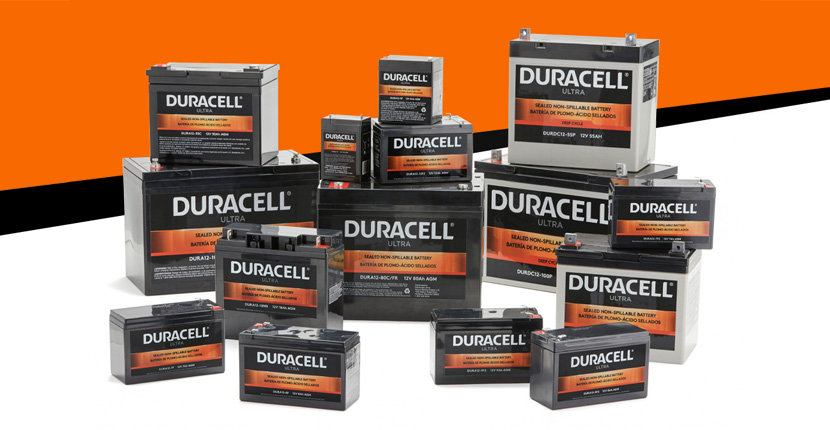How Does an SLA Battery Work?
- by Bryan Velboom - updated on 1/11/2023

Despite the fact that their design is over 160 years old, SLA batteries continue to be used in a wide variety of applications ranging from UPS units and wheelchairs to emergency lighting. There are few other batteries that deliver bulk power as cheaply as a lead acid battery. But how does an SLA battery actually work and how is it different from other lead acid options? Keep reading for answers to all of your SLA battery questions.
What Does SLA Mean on a Battery?
There are two basic types of lead acid batteries: vented lead acid batteries and Sealed Lead Acid (SLA) batteries. The main difference between the two stems from how the electrolyte functions within them (more on that term below).
Vented lead acid batteries - This type of battery vents hydrogen and oxygen gas into the air when recharged. During this process, some of the water is lost to evaporation. That's why vented lead acid batteries require you to occasionally add distilled water to them.
SLA batteries - This type of battery has a sealed design, which doesn't allow gasses to escape. Because of this, there is no water loss during the recharging process and the gasses simply recombine into the original electrolyte.
What are the Different Parts of an SLA Battery?
SLA batteries are constructed from a number of components that work together to produce electricity.
Cells - The interior of SLA batteries are divided into a number of different cells. Each cell contains several grids, which house a number of lead plates.
Plates - The plates are either positively or negatively charged and are arranged in an alternating pattern of positive and negative grids divided by a series of separators.
Electrolyte - In each cell, the grids containing the plates are submerged in a solution of water and sulfuric acid called an electrolyte. The chemical reaction between the electrolyte and the battery plates produces the electricity within a battery.
Terminals - These are the electrical contacts used to drive current into a device or back into the battery when it is being recharged.
How Does an SLA Battery Produce Power?
An SLA battery is an electrochemical device that converts stored chemical energy into electrical energy when the battery is connected to some kind of device (referred to as an external load). Here's how the process breaks down:
- The electrolyte contains positively charged hydrogen ions and negatively charged sulfate ions.
- When you attach a load to the battery, the sulfate ions in the electrolyte move to the negative plates and give up their negative charge.
- The remaining sulfate combines with the active materials on the plates to form lead sulfate. This weakens the strength of the electrolyte and the sulfate on the plates acts as an electrical insulator.
- The extra electrons travel out of the battery's negative terminal, move through the device that's being powered and then back to the positive side of the battery.
- At the positive battery terminal, the electrons flow back in and are accepted by the positive plates.
- The oxygen in the lead dioxide reacts with the hydrogen ions to form water and the lead reacts with the sulfuric acid to form lead sulfate.
- The movement of ions throughout the electrolyte creates the flow of current. As the cells begin to discharge, the number of ions in the electrolyte will decrease and the amount of active material that can accept them also decreases as it becomes coated with sulfate.
- This will continue until the battery's voltage drops so low that it can no longer deliver electricity.
- When it reaches this point, the battery is discharged and the electrolyte more closely resembles water.
How Do You Charge an SLA Battery?
Charging an SLA battery reverses the process listed above by converting electrical energy from a charger back into chemical energy within the battery. In a car or other vehicle, the battery is recharged by the alternator. If you're using an SLA for a different application, such as a wheelchair or generator, you'll need to pick up a battery charger.
Where Can You Buy Battery Chargers?
Batteries Plus has battery chargers for practically any application. When shopping for one, be sure that the charger you select matches both the chemistry and voltage of your battery. For example, if you're buying a charger for a 12-volt AGM wheelchair battery, you need to find a 12-volt charger that's compatible with AGM batteries. For more information read our article entitled "How Do Lead Acid Battery Chargers Work?"
Batteries Plus is Your SLA Battery Headquarters
Batteries Plus is your source for general purpose, deep cycle, gel and high rate SLA batteries. If you have questions regarding which type of SLA battery you need, consult our SLA Battery Buying Guide, or contact your nearest Batteries Plus location.
Does your business rely on SLA batteries? Find out about the many benefits you can take advantage of by signing up for a free business account .